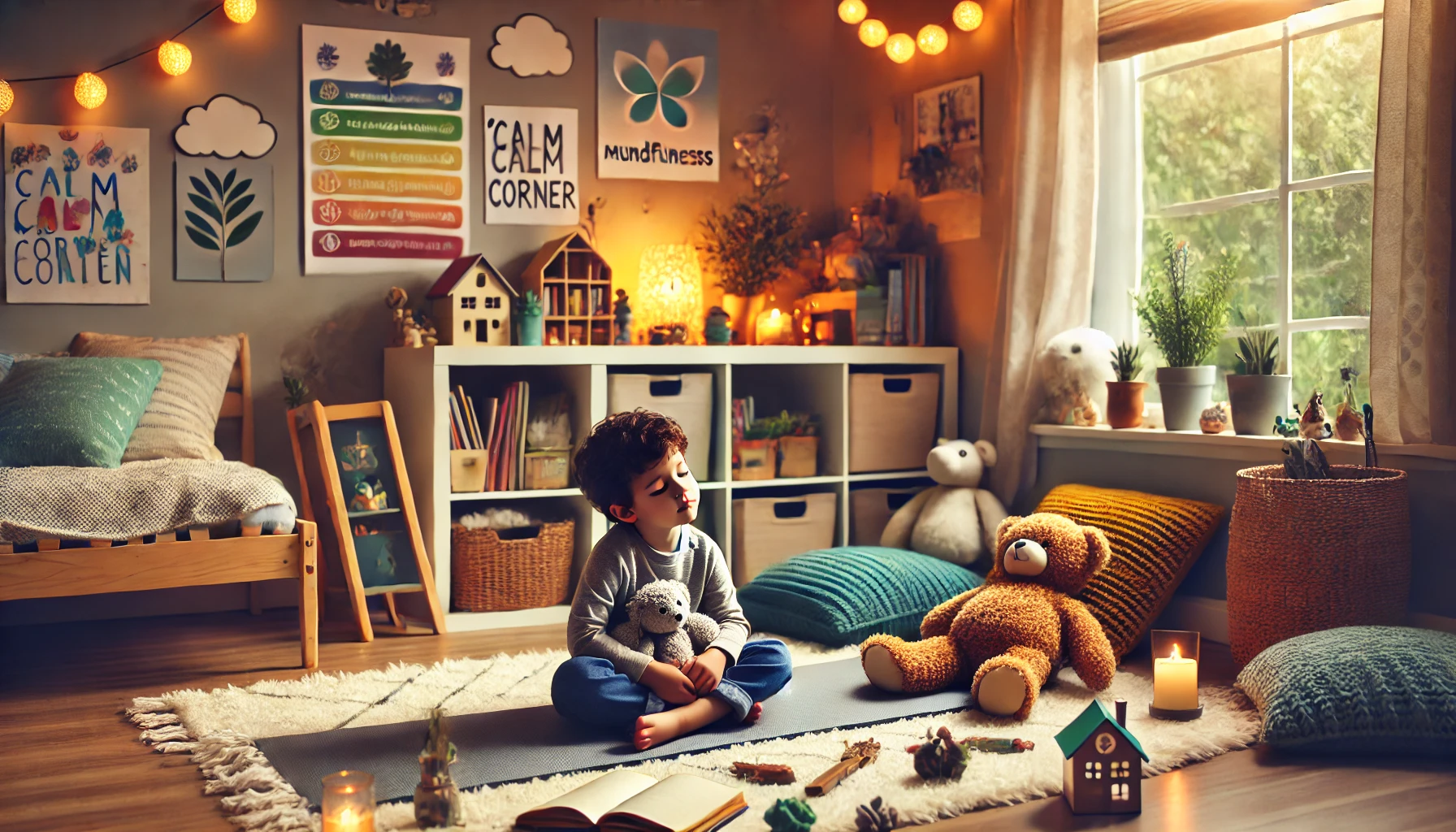How to Teach Young Children About Mindfulness and Relaxation
Even young children experience big emotions and busy minds. Teaching mindfulness and relaxation helps them slow down, understand their feelings, and respond to situations with calm. Through playful exercises, breathing techniques, and simple routines, kids can learn to find moments of peace—even in their most energetic days!
Why Mindfulness Matters for Children
- Helps with emotional regulation and self-awareness
- Reduces stress and anxiety
- Improves focus and attention
- Supports restful sleep
- Encourages kindness toward self and others
1. Explain Mindfulness in Simple Words
Make the concept relatable and fun.
Activity Idea:
- Say: “Mindfulness means paying attention to what we’re doing, feeling, and thinking right now.”
- Use playful examples: “When we eat a snack, we can notice its color, taste, and smell.”
- Ask: “What do you notice about your breath right now?”
What Kids Learn:
- Awareness of their body and surroundings.
- That slowing down can feel good.
- Curiosity about the present moment.
2. Practice Belly Breathing Together
Breathing exercises are perfect for kids.
Activity Idea:
- Have your child lie down and place a stuffed animal on their belly.
- Say: “Watch your animal go up and down as you breathe!”
- Try breathing slowly together for a few minutes.
What Kids Learn:
- How breathing calms the body.
- Self-soothing techniques.
- Connection between breath and emotions.
3. Use Short, Guided Mindfulness Exercises
Keep it brief and playful.
Activity Idea:
- Play “Mindful Listening”: Sit quietly and listen for sounds around you.
- Try “Mindful Senses”: What can you see, hear, feel, smell, or taste right now?
- Reflect together: “What did you notice during our mindfulness game?”
What Kids Learn:
- Focus and concentration.
- Awareness of their environment.
- Enjoyment in quiet moments.
4. Read Books About Mindfulness
Stories make mindfulness engaging.
Activity Idea:
- Read books like Breathe Like a Bear by Kira Willey or Mindful Monkey, Happy Panda by Lauren Alderfer.
- Pause while reading: “Let’s try breathing like the bear!”
- Create a “Mindfulness Storybook” with your child.
What Kids Learn:
- Emotional vocabulary.
- Story-based mindfulness techniques.
- Connection to calming practices.
5. Create a Calm Corner at Home
Designate a space for quiet moments.
Activity Idea:
- Set up a cozy area with soft pillows, books, and calming toys.
- Let your child go to the calm corner when they need a break.
- Decorate it together to make it special.
What Kids Learn:
- Self-awareness: knowing when they need a break.
- Healthy coping strategies.
- That it’s okay to rest and reset.
6. Practice Gentle Movement
Combine mindfulness with motion.
Activity Idea:
- Try child-friendly yoga poses like “tree,” “cat-cow,” or “butterfly.”
- Use slow stretches: “Reach for the sky like a tall tree.”
- Move with intention and focus.
What Kids Learn:
- Body awareness and balance.
- That movement can be calming.
- Joy in connecting breath and motion.
7. Use Mindful Affirmations
Positive words build inner strength.
Activity Idea:
- Teach simple affirmations: “I am calm. I am strong. I can handle big feelings.”
- Say them together in front of a mirror.
- Create affirmation cards your child can decorate and keep.
What Kids Learn:
- Self-kindness and confidence.
- Tools for calming self-talk.
- Emotional resilience.
8. Celebrate Quiet Successes
Reinforce mindfulness practice.
Activity Idea:
- After mindful moments, reflect: “How did your body feel after breathing?”
- Praise participation: “You did a great job noticing your feelings.”
- Keep a “Mindful Moments” chart with stickers or drawings.
What Kids Learn:
- Pride in mindfulness practice.
- Motivation to continue calming activities.
- Recognition of emotional growth.
Final Thoughts
Teaching mindfulness and relaxation to young children gives them valuable tools to navigate life with calm, focus, and self-awareness. Through playful breathing, quiet corners, and joyful reflection, kids learn to embrace stillness and manage big emotions. These gentle habits, when nurtured early, will stay with them as they grow into mindful, resilient individuals.
